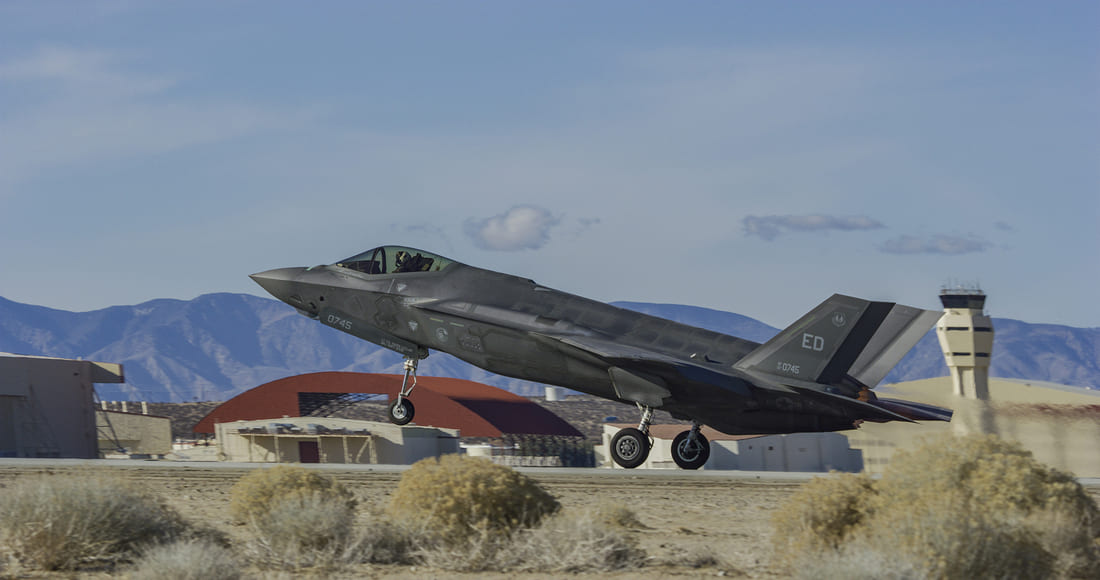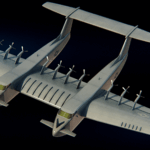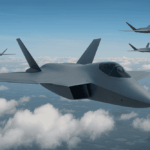At the London defense show on September 16, officials stated that Block 4 integration began in 2018 and is expected to continue through 2030-2032. Company officials described TR-3 as the baseline for Block 4 software and acknowledged the slip that reset milestones earlier this year. Defense officials confirm a tighter subset of Block 4 items is planned for delivery by 2031, with remaining work and integration support continuing into 2032 on the company side.
Block 4 no longer carries the original catalog in one tranche. Program documents show a narrower set of prioritized labs and range time that can be certified by 2031 with features requiring more electrical power or thermal headroom being moved out.
The update also splits TR-3 and Block 4 into a distinct major subprogram with separate cost, schedule, and performance baselines, as directed by Congress in late 2023 and now being implemented by the department. The change makes growth from added content and delays visible instead of burying it inside the broader aircraft account.
TR-3 is a hardware and software stack. It introduces a new Integrated Core Processor, an upgraded panoramic cockpit display electronics unit, and a higher-capacity aircraft memory system. Supplier literature cites much higher compute throughput for mission systems, sensor fusion, and displays compared with the legacy set, with figures up to the mid-thirties multiplier depending on workload and configuration. The practical effect is steadier frame rates on large-format pilot displays and headroom for new software loads without constant repartitioning.
International customers tracked the slip closely this year. Acceptance freezes in 2023-2024 stacked deliveries and forced training pipelines to plan around interim loads. Several European fleets adjusted initial operating dates or tactics syllabi to reflect the training-only configuration in the first wave of TR-3 jets.
Delivery performance in 2024 and 2025 and funding withholds for TR-3
Calendar 2024 closed with 110 aircraft delivered late, averaging 238 days past plan. More than one hundred F135 engines arrived late and the average lateness more than doubled year over year. Auditors tied most of the slippage to TR-3 avionics maturation and parts flow.
The government restarted acceptance in mid 2024 with a training-focused software load for TR-3 aircraft and added a payment hold to protect against incomplete combat capability. The department is withholding roughly five million dollars per aircraft until the combat-credible configuration qualifies, with releases planned in steps as each tail clears agreed test points. According to industry sources, a partial reduction followed early 2025 progress, yet most funds remain frozen until full mission capability proves out.
Through the first half of 2025, the line moved stored jets out of long-term parking as software and hardware stabilized. Deliveries in 2025 included many airframes originally slated for 2023-2024. That catch-up and the payment holds reduced, but did not eliminate, exposure to further schedule movement if software quality gates slip again.
Supply-chain data collected early this year flagged more than 4,000 late parts in final assembly, about twice the historic average. More than 1,600 items sat inside the TR-3 bill of materials, amplifying avionics schedule risk. The parts picture translated into dozens of aircraft staged off the main line awaiting specific components. Program managers also noted a recurring driver on the airframe side, the leading-edge flap assembly, which complicated final assembly tempo over the last two years.
Incentive structures did not halt the lag. Auditors reported hundreds of millions paid over recent lots even as on-time performance worsened. The program office is under pressure to tighten criteria for earning schedule fees and to install a full mechanism to track deviations from contract specs, including the time and cost to correct them.
Testing timeline in FY 2026 and what TR-3 enables in Block 4
Operational test for the TR-3 configuration is planned for mid to late fiscal 2026. The test community raised issues last year about fielding multiple TR-3 aircraft before finishing operational test on that configuration. The revised plan aligns dedicated OT with stable hardware and software and uses targeted regression testing to qualify the training load while the full combat capability clears its points.
TR-3 enables real Block 4 content rather than a stand-alone performance bump. The added memory supports larger mission data files and more sophisticated electronic warfare techniques.
The new core processor lifts sensor-fusion ceilings and allows additional modes for the radar and distributed aperture system without starving the display pipeline. The panoramic display electronics unit carries enough headroom for higher-density symbology and more robust video formatting. With those in place, software drops can add weapons interfaces, EW techniques, secure comms updates, and navigation improvements inside the 2031 window.
Near-term milestones
- Mid–late FY26 operational test entry for the TR-3 baseline that carries combat capability
- Stepwise release of withheld funds per aircraft as software clears defined test points
- Ongoing deliveries in 2025–2026 that transition from training-only to combat-capable TR-3
The modernization office also prepared for pacing threats that demand frequent mission-data updates. TR-3’s added memory and processing space reduces the odds of forced tradeoffs when integrating new threat libraries or EW responses, which helps keep monthly reprogramming cycles on track once Block 4 items start fielding.
Engine core upgrade and power and cooling limits for deferred features
Several planned Block 4 features depend on added electrical power and thermal capacity the current propulsion and thermal system cannot provide sustainably. The F135 Engine Core Upgrade is the chosen path to lift durability and margin. Public statements earlier this summer moved critical design review to around mid-2026. Production is not forecast before 2031, which explains why the trimmed Block 4 set excludes features that need the higher power and cooling budget. Defense officials confirm post-Block 4 capabilities tied to the engine upgrade now sit beyond 2031, with internal planning flags around 2033 for items that explicitly require the new core.
Power and thermal limits are concrete. Advanced sensor modes and electronic attack techniques add heat, and without engine and thermal subsystem gains some modes would impose readiness or sustainment penalties. The revised content plan defers the heaviest modes. A sizable stack remains inside the 2031 boundary, including weapons interfaces, comms and navigation updates, and EW enhancements that fit the existing margins.
According to industry sources, reliability on the current engine is improving in increments, and suppliers are adding capacity. Even so, late engines in 2024 averaged more than five months beyond contract dates. The production plan in front of lawmakers holds to rate growth into 2032, which will require steadier engine and airframe deliveries than the last two years. Audit recommendations push the office to align requested quantities with demonstrated capacity and to refine incentives so late deliveries do not earn schedule fees.
Our analysis shows the practical window for combat-credible TR-3 aircraft begins in 2026 and the achievable Block 4 subset fills out between 2026 and 2031, with integration and close-out tasks continuing into 2032. That window assumes the FY26 operational test start holds, avionics parts shortages continue to ease, and propulsion milestones stay on the updated timeline. If any of those wobble, the withhold mechanism and the subprogram’s separate baseline should isolate the financial signal and keep training pipelines insulated from the sharpest swings.
What TR-3 includes
- Integrated Core Processor for mission-system compute and fusion
- Panoramic Cockpit Display electronics unit for pilot-vehicle interface
- Aircraft Memory System for expanded mission-data and software loads
These elements underpin Block 4 software packages trimmed to what labs and flight test can certify by 2031. Items tied to the engine upgrade wait for higher margin. Program teams emphasize incremental deliveries, not a single monolithic drop, which fits the new subprogram structure and its reporting cadence.
Procurement planning through 2032 assumes rate growth, separate Block 4 reporting, and a propulsion upgrade that reaches production in the early 2030s. The Block 4 content plan itself stays focused on what can be tested and certified with the current engine and thermal system. Features tied to the engine core upgrade move into the follow-on effort that rides the propulsion line once production starts.
Public audit reports, budget exhibits, and industry briefings paint a consistent picture. The trimmed Block 4 set targets an earliest finish around 2031 for the government baseline, the company continues modernization support through 2032, and TR-3 remains the gate to put any of it on the wing. Deliveries in 2024 ran late across the board. 2025 is clearing the backlog but still leans on payment holds and staged capability. Testing in FY26 will decide how fast the program converts training-only tails to full mission use, and propulsion milestones in 2026-2031 decide how soon deferred features can move.
REFERENCE SOURCES
- https://www.avionicsinternational.com/aircraft/defense/future-f-35-panoramic-cockpit-display-system-to-feature-better-processing-memory/
- https://www.defensenews.com/air/2025/09/16/lockheed-martin-expects-f-35-tech-upgrades-to-last-through-2032/
- https://www.gao.gov/assets/gao-25-107632.pdf
- https://breakingdefense.com/2025/09/f-35-block-4-upgrade-delayed-until-at-least-2031-gao/
- https://www.reuters.com/world/us/pentagon-withholds-5-mln-per-f-35-jet-deliveries-resume-2024-08-29/
- https://www.reuters.com/business/aerospace-defense/lockheed-martin-delivers-72-f-35-jets-facing-upgrade-delays-bloomberg-news-2025-07-14/
- https://www.airandspaceforces.com/gao-action-needed-to-solve-f-35-block-4-issues/
- https://www.defensenews.com/air/2025/09/03/pentagon-cuts-back-f-35-upgrades-to-slow-schedule-slips-auditors/
- https://www.defenseone.com/business/2025/07/lockheed-has-cleared-backlog-stored-f-35s/406751/
- https://www.defenseone.com/business/2025/06/f-35-engine-upgrade-hits-delay-casting-doubt-timeline/406172/
- https://www.l3harris.com/all-capabilities/f-35-lightning-ii-avionics
- https://www.l3harris.com/sites/default/files/2023-02/F-35-TR-3-Infographic-sas-62431_web.pdf



